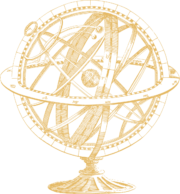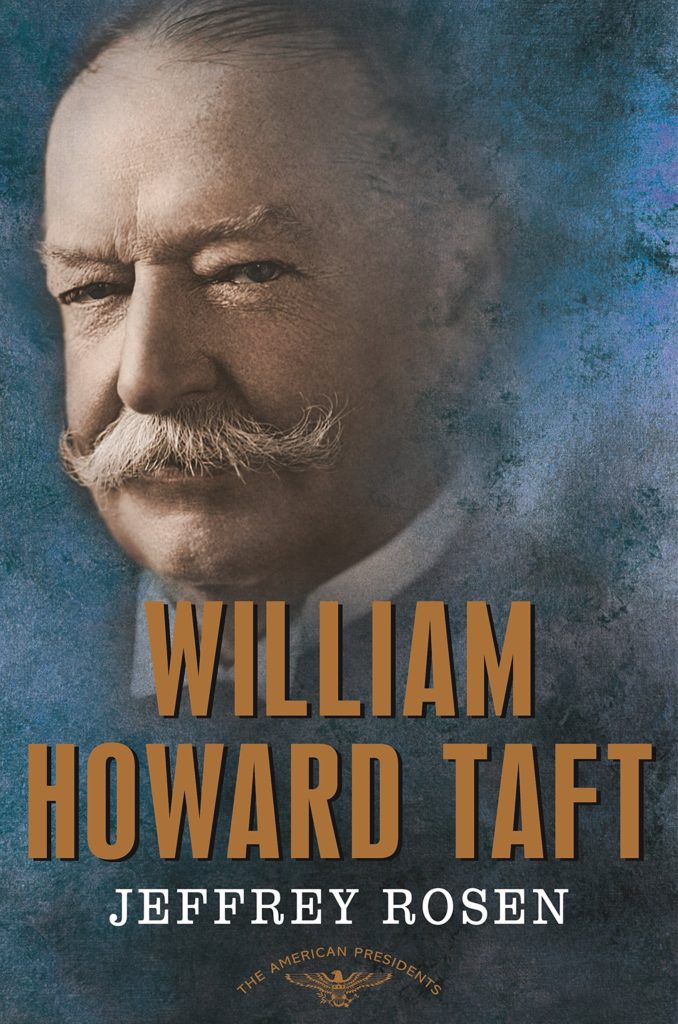“The incoming President proposes to abandon horses for reasons that the gentleman well knows: he does not wish to violate the law against cruelty to animals.”
Congressman James Tawney, during a House debate over buying automobiles for the Taft White House
William Howard Taft was our fattest president.
Let me rephrase.
William Howard Taft, our fattest president, was the only person to ever serve as both Commander-in-Chief and Chief Justice of the Supreme Court.
That feels better.
As Jeffrey Rosen details in his American Presidents Series book, our hefty duel Chief was destined to be entwined in law and politics from his birth. William Howard’s father, Alphonso Taft, helped found the Republican Party and was a delegate to the first ever Republican Convention. A lawyer of renown, Big Al served briefly as Ulysses Grant’s Secretary of War before becoming his Attorney General. In later administrations he would enjoy stints as minister to Austria-Hungary and, following that, minister to Russia. The Taft’s – later including William’s progeny – would establish a Republican legacy spanning more than a century.
The law was always in the crosshairs of the William Howard Taft’s path to greatness. After graduating second in his Yale class, he moved back home to Cincinnati to attend law school. He would graduate, pass the bar and serve in a number of law-related roles including court reporter for the local paper, Assistant Prosecutor of Hamilton County, Collector of internal revenue in Cincinnati, private law practice and judge on the Ohio Superior Court. These were prelude to his federal appointments of Solicitor General of the United States and federal judge on US Court of Appeals for the 6th Circuit. He would even serve a term as dean of the law school at his alma mater.
Despite his love of courtrooms, Taft couldn’t avoid being pulled into the political arena. Hoping to secure a seat on the Supreme Court from President McKinley, he was instead asked to head a commission to set up a civilian government in the (newly-acquired) Philippines; with the promise the next open spot on the High Bench would be his. Even though he did not believe the US should maintain the islands as a possession, he not only led the commission but became the governor of the territory. His dedication to this office was so great that he actually declined ensuing appointments to the Supreme Court twice. The livin’ in Manila must have been pretty choice if he turned down two shots at his life-long dream job. (Ed. note: Presciently, when Taft was promoted on the island nation, Teddy Roosevelt said, “the first Governor of the Philippines ought to combine the qualities which would make a first-class President of the United States with the qualities which would make a first-class Chief Justice of the United States.”)
For better or worse, none of that prelude really matters when it comes to judging Taft’s presidency. His legacy was then and is now judged in the shadow of Theodore Roosevelt. As John Adams and Andrew Johnson knew all too well, some acts are impossible to follow. But before we discard Taft into the dustbin of one-term American presidents, consider a few key points. On the economic front, Taft took a budget deficit of $89 M in 1909 to surplus of $11 M in 1911. Though Roosevelt was considered a great conservationist and an energetic trust-buster, Taft brought more natural land under federal protection and more anti-trust suits into courts in one term than TR did in almost two.
Per the trusts, Taft sought to prevent the formation of monopolies before they even started, rather than re-actively suing them. Taft’s majority opinion in Addyston Pipe & Steel Co – when he was a federal judge in 1898 – remains a classic statement on antitrust literature. When the case went to the Supreme Court the justices adopted Taft’s reasoning and held his judgment to be correct. Taft may have been dull compared to his predecessor, but he knew the law and his opinions were incredibly influential.
Always judiciously minded, Taft believed strongly in checks and balances. Whereas Teddy did anything that wasn’t expressly illegal, Taft only did things specified in the Constitutional job description. Taft worked hard to codify into law many of TR’s executive orders; both so they would last and, in Taft’s view, they would proceed through the proper channels. In these orders and other instances, such as when he was pressured to veto a tariff bill that increased hundreds of duties, he repeatedly deferred to the law-making role of Congress. “They have their responsibility and I have mine. I could make a lot of cheap capital by adopting just such a course [of veto], but what I am anxious to do is to get the best bill possible with the least amount of friction. I owe something to the party, and while I would popularize myself with the masses with a declaration of hostilities towards Congress, I would greatly injure the party and possibly divide it.”
That said, he wouldn’t just rubber stamp any bill Congress placed on his desk. Taft vetoed a bill requiring literacy tests for immigrants and the Webb-Kenyon Interstate Liquor Act, which was basically Prohibition Lite (though, sadly for brewers and imbibers nationwide, his veto on the latter was overridden). Sticking to his jurisprudential roots, he also vetoed entrance of New Mexico and Arizona into the Union because their constitutions allowed for popular recall of judicial decisions; a slippery slope on which TR would stump in his Bull Moose comeback bid. For some advice sorely needed in this day and age, I’ll quote Taft at length: “A popular constituency may be misled by vigorous misrepresentation and denunciation. The shorter the time the people have to think, the better for the demagogue. One of the great difficulties in carrying on popular government is in getting into the heads of the intelligent voters what the real facts are and what reasonable deductions should be made from them. Any reasonable suspension of popular action until calm public consideration of reliable evidence can be secured is in the interest of a wise decision. That at least was what our forefathers thought in making our Federal Government and the result has vindicated them.”
Unfortunately for William Howard Taft, most people, if they remember him at all, think of a fat guy stuck in a bathtub. Taft was Roosevelt’s hand-picked successor. He was also Teddy’s bitter target four years later. The biggest question I found myself asking – aside from why TR didn’t just run again in 1908 – was how the hell Taft was the heir apparent. When stacked next to TR, Taft could not be more different in temperament, approach to governing, policy expertise, approach to American imperialism or views on the role of the executive. Maybe Taft’s mother had it right when she told him, “Roosevelt is a good fighter and enjoys it, but the malice of politics would make you miserable. They do not want you as their leader, but cannot find anyone more available.”
Luckily for Taft and his bathtub-wedged-legacy, the Supreme Court would ultimately be listed on his resume. As mentioned earlier, Taft twice declined an appointment and, while president, appointed six justices himself, a record for a one-term president. This included the Chief Justice appointment of 65-year-old Edward Douglas White. Many speculated, or considered it an open secret, that Taft chose the aged judge to get a shot at the Chief seat himself after leaving the White House. It paid off.
On June 30, 1921 – eight years after exiting the Oval Office – William Howard Taft was confirmed as the 10th Chief Justice of the Supreme Court. Taft’s legacy as Chief Justice is legendary. He entered the Court with three big goals and achieved them all. First, he persuaded Congress to establish a judicial conference of federal appellate judges, led by the Chief Justice. He knocked that out in less than a year. Second, pass the Judiciary Act, which let the Court focus on constitutional cases rather than be forced to hear mandatory appeals of less consequential items. That’s right, until 1925 the Supreme Court didn’t pick and choose which cases to hear. They heard them ALL. This was a sea change in how the Court conducted business and it continues in this manner to this day. Third, secure funds to build a proper Supreme Court building across from the Capitol. For over a century the Court had presided in an overcrowded space within the Capitol. While Taft would not live to see a case heard inside it, the Marble Palace owes its existence in large part to his weighty influence. “Next to my wife and children [the Court] is the nearest thing to my heart in life. I don’t remember I ever was president.”
William Howard Taft endorsed the Madisonian version of Republicanism; “a popular representative government” that reflected public opinion but didn’t bend to populist whim. I’ll let him take it home with another endorsement of cooler heads and calmer minds always prevailing. “We are not a pure democracy governing by direct action, and the great men who framed our fundamental law did not intend that we should be…The people do rule and always have ruled in the United States. They have their will but they have it after a wholesome delay and deliberation which they have wisely forced themselves to take under the restrictions of a Constitution which, adopted by however small popular vote, they have fully approved by more than one hundred and thirty years of acquiescence. It is this voluntary self-restraint that has made their Government permanent and strong. It is a fundamental error to seek quick action in making needed changes of policy or in redressing wrong.”
Trivia
- Credited with starting tradition of the 7th Inning Stretch and throwing out the first pitch at baseball games (1910)
- Half-brother Charles Phelps Taft became a US Congressman and owned the Cincinnati Times-Star, the Philadelphia Phillies and the Chicago Cubs
- Big cat – 5’11” and 243 lbs. at college graduation. Got up to about 340 when really stressed at end of White House term, but went paleo a couple times in life and dropped 75+ lbs. each time.
- Election to 5-year term on the Ohio Superior Court. This was only elected office he would hold until becoming President
- 1904 – becomes Secretary of War in TR’s new Cabinet; visits Panama to oversee Canal construction
- First election where sound recordings played a big role (1908)
- Designed and installed the Oval Office in 1909
- Mrs. Taft accepted 3,000 cherry trees from the mayor of Tokyo and planted them around the Tidal Basin
- First sitting American President to visit Mexico
- In 1912, won the fewest votes ever by an incumbent president (largely because TR got the most ever for a third-party candidate)
- Went back to teach law at Yale after losing the reelection campaign. When offered the Chair of the Dept., he reportedly joked, “if they provided a Sofa of Law, it might be all right.”
- Most significant court opinion issued – Myers v United States – allowed the president to fire any officer he appoints rather than need Congressional approval.
- Debunking fun facts: He didn’t actually get stuck in the bathtub.
Follow-up Reading
- The Bully Pulpit: Theodore Roosevelt, William Howard Taft and the Golden Age of Journalism by Doris Kearns Goodwin
- The William Howard Taft Presidency by Lewis Gould
- The Life and Times of William Howard Taft by Henry Pringle

